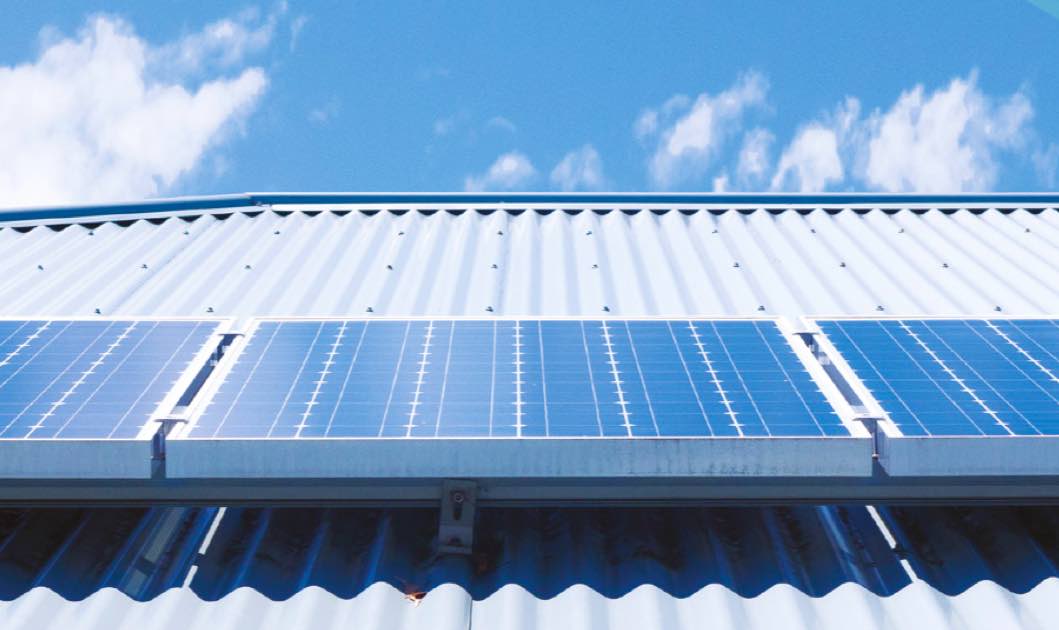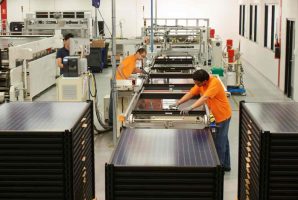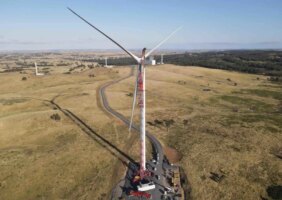A new report has claimed that the cost to solar households of a proposed charge for exports to the grid could be more than double that projected by the Australian Energy Market Commission, potentially leaving many solar homes with little or no income for their surplus generation.
The report, published this week by Victoria University’s Professor Bruce Mountain, critiques the AEMC’s calculation of the impact of the network charge for solar exports, as proposed in a draft determination last month.
As RenewEconomy reported at the time, modelling produced in a 250-page document proposed a tariff of around 2c/kWh for exports in the middle of the day, which the AEMC estimated would cost the average solar household up to $100 a year.
The proposed rule has been born of the argument that a charge levelled at solar households would ensure network companies had the money required to invest in the grid to accommodate a two-way energy flow, without penalising non-solar homes, and facilitate more rooftop solar on the grid.
Proponents of the proposed solar export charge – including the Total Environment Centre, the St Vincent de Paul Society Victoria and the Australian Council of Social Services, as well as the network company SA Power Networks – argue it would have net positive impact on distributed generation, by funding the removal of some of the major constraints on solar households, many of which are limited or banned from exporting back into the grid at all due to network congestion issues.
Of course, not everyone agrees. And Mountain – who heads up the Victoria Energy Policy Centre at VU – has been a strong critic of both the proposed charge, and the modelling behind it.
Based on his own modelling, Mountain this week contends that the AEMC has made an error in its calculations that, once corrected, would make the impact of its proposal much larger than originally suggested.
“Contrary to the AEMC’s claim that their proposals will have an insignificant impact on solar homes, the AEMC’s proposal is likely to leave existing solar homes with little or no income from rooftop solar exports once much lower feed-in rates are implemented from the middle of this year,” Mountain writes in his report.
“In fact we expect that with much lower feed-in rates soon to take effect, after deducting the AEMC’s network usage charge, many solar homes outside of Victoria are unlikely to obtain any payment from their surplus rooftop PV production that is injected into the grid.”
Mountain comes to this conclusion by working backwards from the AEMC’s case study of a 5kW solar home in Sydney that it estimated would be charged $100 per year for solar exports; “the top end of the range of injection charges that distributors told the AEMC would be appropriate to compensate distributed energy integration expenditure,” as Mountain notes.
Mountain argues that in this calculation, the AEMC has understated the solar export charge by a factor of at least two: “Dividing $100 by the median exports (2031kWh per year) gives an injection price of 4.9 cents per kWh, almost 2.5 times what the AEMC stated,” he writes.
“If we used the AEMC’s injection price of 2 cents per kWh, its Sydney case study would only pay an annual charge of $42 (2 cents/kWh multiplied by 2,100 kWh annual injections). For the AEMC’s case study to pay a $100 injection charge, the injection price would need to be 4.8 cents per kWh ($100/2,100 kWh).”
Based on that 4.8c/kWh figure, and factoring in average – and decreasing – feed-in tariff rates in different National Electricity Market states and jurisdictions, Mountain paints a picture for future solar households that looks decidedly grim.
“We expect that the effect of a 4.8 cents perkWh network injection charge will be worse in New South Wales, South Australia and Queensland,” the report says, noting that Victoria tends to have higher feed-in tariffs due to regulation requiring recognition of solar’s emission reduction benefits.
“In fact with revised (much lower) feed-in rates likely soon (to reflect the sharp decline in wholesale electricity prices) we expect that the effect of the AEMC’s injection charge will mean that many solar homes outside Victoria will effectively receive no income or might even be liable to a net payment to inject electricity to the grid, if the AEMC’s recommendation takes effect,” the report concludes.
The AEMC has responded to the claims, telling RenewEconomy on Wednesday that it stands by its calculations and still believes solar remains “a very good investment” under the proposal outlined in the draft determination.
“Our analysis factors in the benefits that customers get from self-consuming their own solar power and not just export revenue,” said AEMC chief Benn Barr in an emailed statement.
“The Mountain report says that the median export based on Choice Magazine’s bill survey is 2,200 kWh a year, therefore on average people only earn ~$130 for their exports. It then subtracts $100 from it to derive estimated solar earnings. This takes the median exports across all panels they have data for (not just 5kW systems – it would also include tiny, old, and inefficient systems too).
“We don’t agree with that analysis. It can’t be assumed that all customers will face the same export charge. For networks that have ample capacity to support more solar, any charge is likely to be minimal. But for those that need to do more to enable solar exports, their export charges are likely to be higher.
“Similarly small systems would pay smaller charges than larger systems – just as smaller systems earn less than larger systems,” Barr said.
“We based the $100 recovery charge on the export profile of a 5kW system during peak hours – if your system is that much smaller/more inefficient then you would be charged much less if your network business opted for export charging.”
The AEMC’s Barr also stressed that the proposed solar charge was a modelled cost only, and not a recommended fee. “Our report lays out the different scenarios for different size systems and we think it is important to highlight that these reforms do not equate to one blanket solar charge,” he said.
“It’s important to note that under our proposal, each network business would need to come up with a tariff structure – which would include various options – and which would have to be approved by the AER, which will determine if it is in the interests of consumers.
“So the impact on solar owners will very much depend not only on what size system they have but on which network they are in and what options that network develops as part of their tariff structure.
“We think solar remains a very good investment under these proposals. Having said that, we would encourage Professor Mountain to make a submission to the draft determination as we are interested in gathering a wide range of views on this issue, which we will analyse and consider in order to make our final determination,” Barr said.
In that spirit, Mountain has said he is willing to make the Victorian Energy Policy Centre data on residential solar export charges available for research purposes, on request, but has also ‘encouraged’ the AEMC to make its data publicly available.
“We see no reasonable basis for any sustainable claim of confidentiality (it is a single data field not attributable to any individual consumer and not commercial-in-confidence),” Mountain said.










